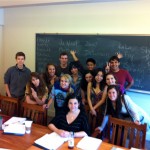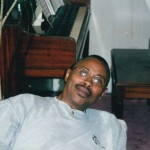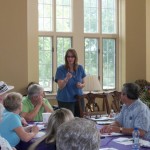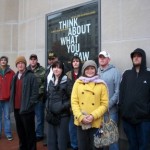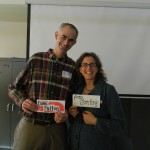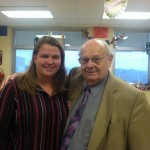Three Chapters – Hadley, Pledger, Mercier
Forums › 2023 Summer Seminar › Becoming a Holocaust Educator 2023 Summer Seminar Responses: due JUNE 18 (or earlier) › Three Chapters – Hadley, Pledger, Mercier
-
AuthorPosts
-
-
June 15, 2023 at 9:49 pm #31853
I enjoyed reading Becoming a Holocaust Educator. There were many practices that I shared with the educators featured in the book when teaching about the Holocaust, and many that inspired me.
The first chapter by Robert Hadley struck me in the gut when he mentioned that “my successful course had fallen prey to the fiscal constraints confronting our district…” (23). His numbers and the lives he had touched seemed to shed a bright light on why his course should have NEVER been cancelled! I loved how he shared his entrance in Holocaust education with his interaction/interview of AL. I find more and more that Holocaust educators are touched by one life that had a role in the Holocaust and the ripple effect of the relationship convicts an educator to pursue knowledge, professional development, course development with a focus on the Holocaust, genocide and human rights. A Holocaust survivor influenced me in much the same way that Al influenced Robert. I believe these to be far from chance encounters. 🙂
Also, he mentioned the use of photos from the Imperial War Museum to engage his students. As students are more and more media saturated, the photos pull them in much like the reels and images they scroll through on Insta and Snapchat. The images bring the INDIVIDUAL LIVES close to them which helps them break down the idea that these were human beings making human choices. As Robert mentions, “this helped them overcome obstacles…and face the fact that HUMANS committed these crimes…” (28). This helps dispel the misconceptions that monsters did these “evil” atrocities. On the flip side, photos humanize the victims and show that they had ordinary lives prior to their persecution and did ordinary things on the daily similar to our students. This helps dispel the idea that they were only victims.
Next, I am 100% in agreement with Michelle Pledger in offering students the authentic opportunities to collaborate with mentors and experts and share their learning with public audiences. Offering students the opportunities to engage with and query authors, podcasters, survivors, and even Jewish teenagers gives them ownership of their learning. This is beyond powerful. As well, her driving questions were crucial to the students’ learning—“Who is responsible for the promotion of civil rights and justice locally, nationally, and globally? What does it mean to be a civic agent for change? How can high school students stop the repetitious cycle of bystanders by becoming upstanders?” (145). She put all the “puzzle pieces” together in order to make their learning go beyond the walls of the classroom. The connections with the Peacemakers was phenomenal.
She made me reflect upon a project my students presented to the public. They researched, curated, and docent led the public and the school community through a Ravensbruck exhibit on loan from Kennesaw State University. They created podcast episodes about the chosen banner they had worked with for the exhibit. They created invitations, staged the exhibit in our school’s chapel, created QR codes for their podcasts and further information about Ravensbruck and the Holocaust, made a display of books and book talked the books to the guests and wrote reflective journals about the experience. It was beyond amazing. However, I failed to connect them with outreach further into our St. Louis community. Michelle’s work has encouraged me to connect my students with the organization at a local university which supports refugees from the Bosnian genocide. They could possibly collaborate to work on a community exhibit and contemplate similar questions to the ones Michelle proposed to her students. I am inspired!!!
Lastly, I enjoyed Paula Mercier’s chapter with her middle school students and the Holocaust Symposium model. She brings up a good point about making the study of the Holocaust a multiple perspective study. Seeing this historical event through a multitude of lenses provides students with a more “panoramic” view. It encourages more discourse.
Something that perplexed me was how she and her cohort had enough time to PLC as much as she mentioned. It’s a fantastic model, but I am not certain that most schools/educators would be able to meet with one another that often. When do they grade?
I LOVED how she had made the free verse poem assignment be a combination of their own words/experiences and those of Klein’s childhood memories. What a meaningful way to join “the past and the present” (158) in a tangible way. She really was intentional in providing a safe environment for her young students to fully study the Holocaust in an age appropriate way. I teach seniors, so it was refreshing to see how she works with a younger group of students. Hats off to her!
-
-
AuthorPosts
- You must be logged in to reply to this topic.
Recent Replies
Recently Active
-
Active 27 minutes ago
-
Active 30 minutes ago
-
Active 2 hours, 3 minutes ago
-
Active 23 hours, 28 minutes ago
-
Active 1 day, 4 hours ago
- View All Members

